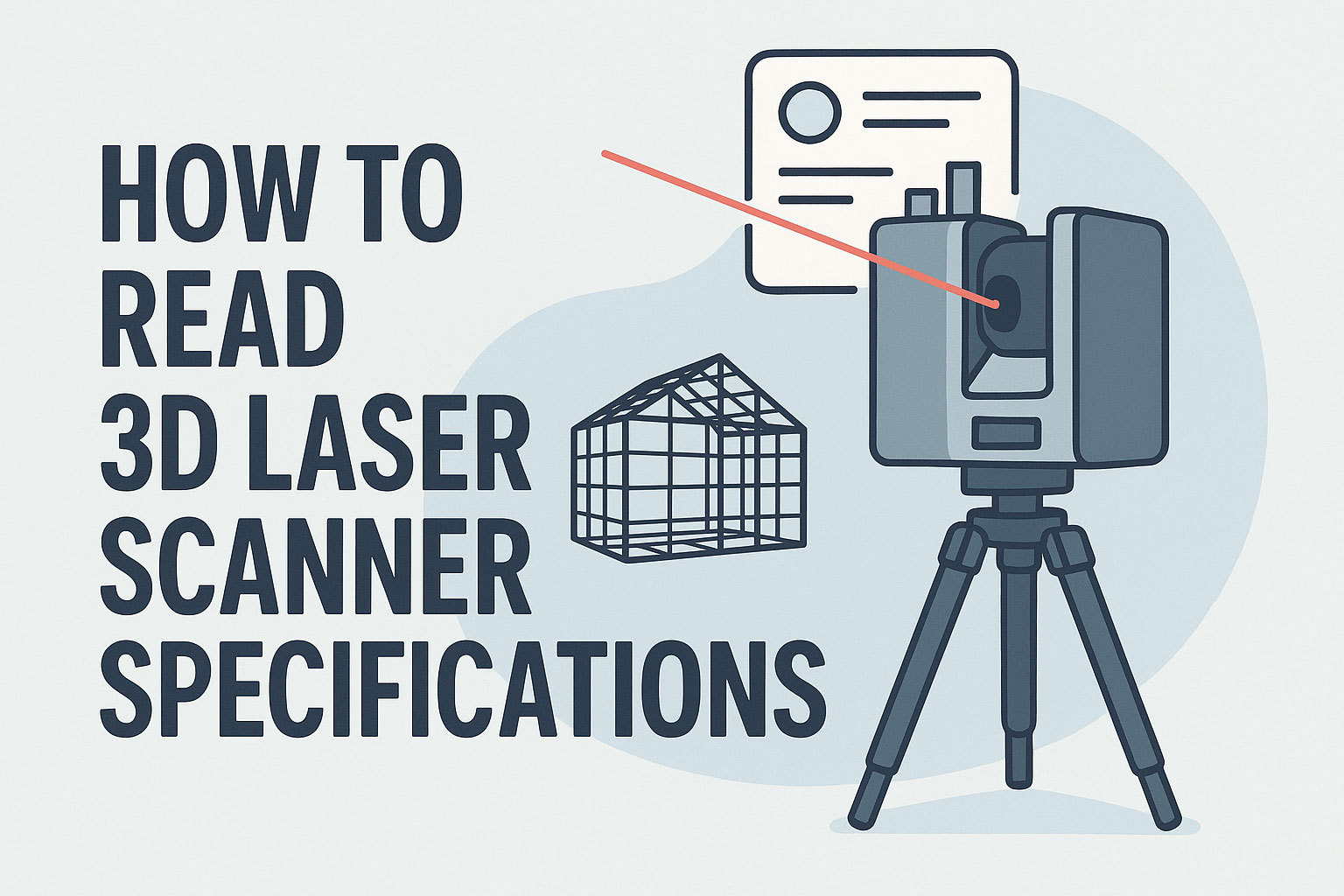Learn how to read 3D laser scanner specifications like range, resolution, and accuracy so you can choose the right tool for your needs.

How to Read Technical Specs of a 3D Laser Scanner
1. Accuracy
Accuracy refers to how close the scanner’s measurements are to real-world dimensions. It’s typically expressed in millimeters (e.g., ±1 mm).
Tip: For architectural or industrial use, aim for a scanner with accuracy of ±1 mm or better.
2. Range
Range is the maximum distance the scanner can measure from its position — usually noted as “effective range” or “maximum range” (e.g., 0.5 m – 300 m).
Short-range scanners are ideal for interiors or small parts; long-range scanners are built for buildings, infrastructure, or outdoor sites.
3. Resolution
Resolution defines the density of the scan — how closely spaced the individual points are in the point cloud. Higher resolution means finer detail, but also larger file sizes and longer processing times.
Look for: Adjustable resolution settings to balance speed and detail depending on your job.
4. Scan Rate
This indicates how many data points the scanner captures per second, usually in points per second (e.g., 1 million pts/sec). Higher scan rates lead to faster fieldwork.
Useful for large-area scans or high-traffic environments where speed matters.
5. Field of View (FoV)
FoV describes the scanner’s capture angle both vertically and horizontally (e.g., 360° × 270°). A wider FoV means fewer setups needed to cover a full space.
For full-room or building coverage, look for near-360° scanners.
6. Data Format Compatibility
Most scanners export point cloud data in formats like .e57, .las, .ptx, or proprietary formats. Make sure your scanner supports the formats compatible with your software (e.g., ReCap, Cyclone, RealWorks).
7. Battery Life
On long field days, battery life matters. Most professional scanners offer 2–5 hours of runtime. Consider spare battery kits or hot-swappable power options.
8. Weight and Portability
Will you carry your scanner to rooftops or remote areas? Lightweight units or backpack-compatible models may save time and effort. Be sure to check whether the listed weight includes the tripod.
Bonus: Software & Workflow Integration
Always ask: does the scanner come with software? Does it support cloud registration, automatic modeling, or direct BIM integration? These features can greatly enhance your productivity.
Conclusion
Understanding 3D laser scanner specifications is key to making an informed decision. Focus on what matters most to your workflow — accuracy, portability, or speed — and always balance your budget against required performance.
Want more help? Check our full scanner catalog or explore our buyer’s comparison guide for side-by-side reviews.

Leave a Reply